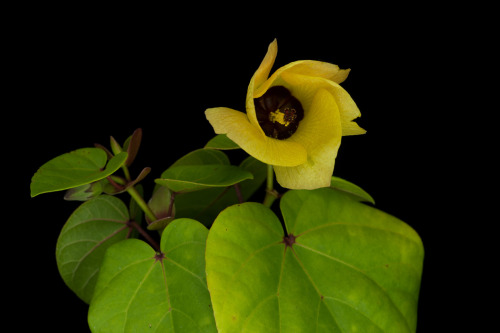Hibiscus tiliaceus is a widespread member of the mallow family commonly found by beaches as its many
Hibiscus tiliaceus is a widespread member of the mallow family commonly found by beaches as its many sea-inclusive common names suggest. Native through Oceania and South Asia, the plant has now become naturalized throughout he world, including the tropical Americas. There is some dispute about whether it is truly a Hawaiian native plant or whether it was introduced by early settlers who used the plant extensively for its buoyant wood. It also provides fiber from which ropes were made, corky bark which sealed cracks, and parts of the plant can be used to treat fevers and as food. The Hawaiian name for it, hau, appears quite often in contemporary naming for businesses and streets.H. tiliaceus is one of the very few [sort of] native plants I was able to find and recognize among all the multitudes of introduced species. It was growing alongside a large Thespesia populnea, Ipomea pes-caprae, I. obscura, Abutilon grandifolium, and quite a few clumps of Vitex rotundifolia. It is certainly possible that being close to a coastal rode, the plants were deliberately placed, but even if so, the choice of using natives is to be commended. The pollen from this species was especially bright, and upon reviewing my photos at full size, I could not only make out the shape of the pollen, but a pronounced contrast of some on the stigma. Where many have the fluorescent coloration and intensity of fresh pollen from the anthers, quite a few are dimmer and blue rather than green. I have two guesses about this. My first thought is that the blue pollen are hollow shells – just the capsule left behind after germination. My second thought is that they are pollen grains from a different species. If anyone has any insight into which is more likely, I’d love to hear your thoughts as this is something that has been often on my mind for the last 6 months! -- source link
#hibiscus#hawaii#hawaiian#malvaceae#mallow#fluorescent#ultraviolet#pollen#fluorescence






